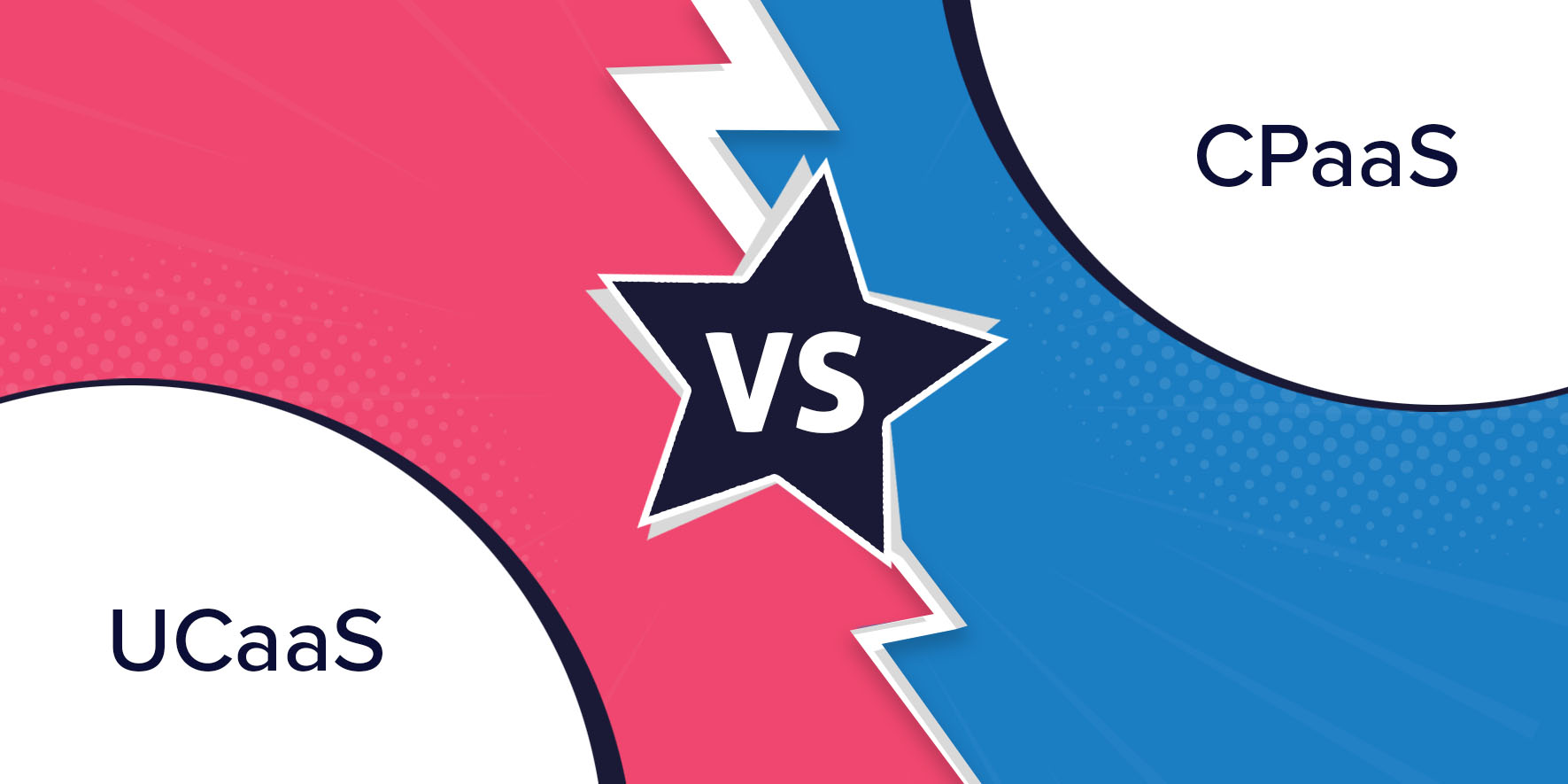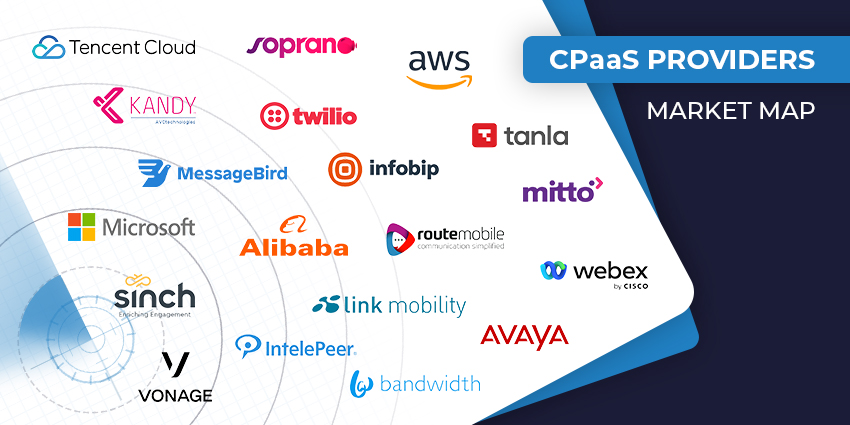As more companies make the migration from on-premise to cloud-based communication technologies, many are making critical choices on how to build their communication stack. Do they shop for a comprehensive communication solution with UCaaS, or build new functionality and opportunities into existing technology with CPaaS?
The “as a Service” environment seems to be growing more comprehensive and complex all of the time, introducing the world to concepts like Video Conferencing as a Service, Contact Centre as a Service, and even Software or Rooms as a Service. So, how do you decide which “as a Service” solution you really need?
Today, we’re going to crack the code of the UCaaS and CPaaS environment to help you determine which avenue you should be travelling down with your communication capabilities.
Understanding the Acronyms: CPaaS vs. UCaaS
UCaaS and CPaaS are easy to confuse because they both focus on developing the modern communication stack. Each option comes with access to flexible tools for growth in your collaborative and communication systems. However, UCaaS and CPaaS differentiate in the ways that they provide essential services to clients.
UCaaS, in many ways, is similar to a traditional platform for on-premise communications. With UCaaS, you get access to a fully-functional unified communication landscape that combines everything you need into a single environment. Businesses access a single platform where they can tap into phone services, video, call recording and more.
CPaaS, on the other hand, acts as an open foundational platform where developers can add their own communication features into existing cloud-based application. In other words, it allows companies to evolve and expand, without having to develop a new back-end. With CPaaS, you have more of a build-your-own model, designed to combine various puzzle pieces in the form of modules and APIs.
Unlocking Unified Communications as a Service
In the communication space, UCaaS is probably the best-known term in cloud communications. When the as-a-service offering arrived, providing access to flexible communications in the cloud, UCaaS was one of the first ways that businesses saw the benefits of this new scalability.
In the UCaaS Magic Quadrant, Gartner devices UCaaS as something that can combine the critical factors for communication into a single space. Unlike UC that concentrates heavily on on-premise hardware, UCaaS is more focused on cloud-based services delivered over the internet. Since all the technology is hosted, there’s no need for any data centres or servers. All you need is a log-in platform, and you can access:
- Shared infrastructure like data centres
- Tools for network management and provisioning
- Crucial communication services (video, telephony, messaging, etc)
- Pay-per-month pricing
- The flexibility to scale at your own pace
Covering the Bases of Communication Platforms as a Service
CPaaS, on the other hand, is very similar to UCaaS, but it delivers a different kind of experience. Just like UCaaS, your technology is delivered over the cloud, and often on a pay-monthly subscription service. However, while UCaaS delivers the entire communication platform to your team in one go, CPaaS allows business owners to develop the solution that suits them.
For instance, you might add video collaboration, instant messaging, and voice calls to the technologies that you already use in your landscape. This is possible through the use of sample codes, Rest APIs, developer forums and in-depth documentation. Some companies even offer their own software development kits that are specifically for CPaaS use.
With CPaaS APIs, businesses can unlock high-quality calls and video chatting, as well as web-based chat, two-factor authentication, and call analytics. CPaaS offers one of the easiest ways for businesses to expand at a pace that suits them, without having to adjust back-end infrastructure. It can include:
- Shared infrastructure and data centres
- Frameworks for building applications (like SDKs)
- APIs for entirely new services
- Pre-built solutions from existing community marketplaces
- Endless growth opportunities
The Benefits of UCaaS and CPaaS Today
Both UCaaS and CPaaS offer incredible value to the modern business, by giving companies the freedom to access more of their communication landscape in the cloud. As a Service offerings mean that companies can avoid some of the stress and confusion that comes with managing their back-end infrastructure and focus instead on growth.
Both CPaaS and UCaaS offer similar benefits to enterprises, such as:
- Ease of Use: CPaaS and UCaaS implementation doesn’t have to be complicated. Users can access these solutions in the same way as traditional tools
- Cost Control: because you can access both technologies through the cloud, it’s possible to scale according to your needs. CPaaS adds new features to the technology you already have while UCaaS eliminates the demand for additional hardware and maintenance costs
- Access to endless growth: UCaaS and CPaaS solutions feature incredible technology like mobile UC apps, chatbots, and more. These tools would be very difficult for many businesses to access on their own
- Incredible opportunities: The unified nature of UCaaS means that it’s easier to work across a range of networks and devices for businesses. On the other hand, customising tools with APIs requires a lot less work than building a back-end infrastructure
CPaaS and UCaaS appeal to companies with different organizational strategies. For instance, to get the most out of their CPaaS deployments, companies might need access to developers or third-party experts that can help with their API environments.
On the other hand, UCaaS solutions are dependent on a brand’s ability to monitor the use of the UCaaS stack. Businesses need an environment in place that allows them to determine whether the UCaaS environment is working for their business or not.
Why Not Both?
CPaaS and UCaaS both have a lot of value to offer today’s businesses when used correctly. Although UCaaS is fantastic for improving internal communications and simplifying the way that businesses can manage their strategies, CPaaS has it’s own value. With CPaaS, companies can evolve and expand rapidly, tapping into tools like artificial intelligence, machine learning, instant-messaging, and video conferencing, without confusion on the back-end.
Fundamentally, the main difference is that UCaaS platforms are ‘ready to go’ and CPaaS platforms require your software developer (coders) to get down in the code and develop what you require.
Now more than ever, it’s less likely for companies to have to make the choice between one service or the other. You can have a CPaaS strategy that works with your UCaaS environment and vice-versa. As usual for the communication landscape, the key is finding the right vendor.
CPaaS Providers / Vendors List (UK)
- Click here to see our list of CPaaS providers
Any missing from our list? Comment below and we’ll add it in. If you found this list useful, please share it at least once or drop us a note below.







